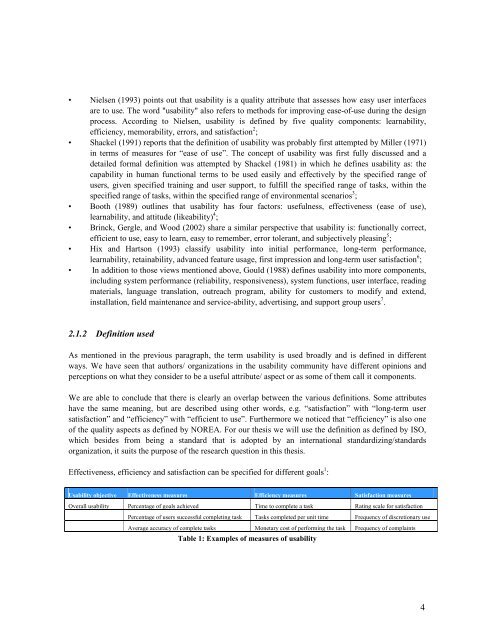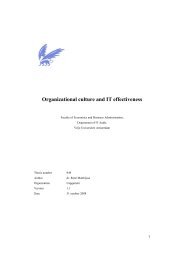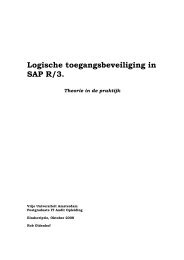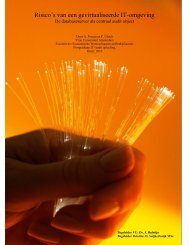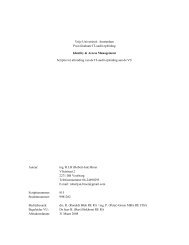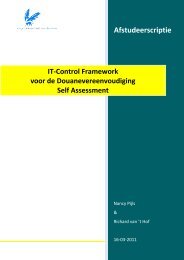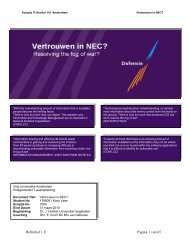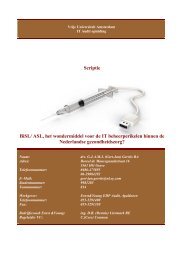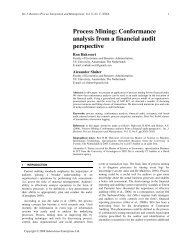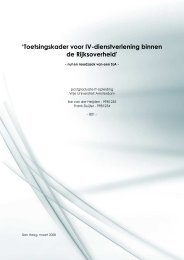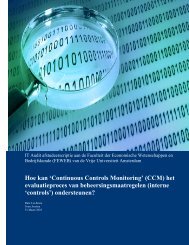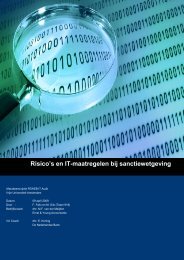Usability and Security
Usability and Security - Vurore
Usability and Security - Vurore
Create successful ePaper yourself
Turn your PDF publications into a flip-book with our unique Google optimized e-Paper software.
• Nielsen (1993) points out that usability is a quality attribute that assesses how easy user interfacesare to use. The word "usability" also refers to methods for improving ease-of-use during the designprocess. According to Nielsen, usability is defined by five quality components: learnability,efficiency, memorability, errors, <strong>and</strong> satisfaction 2 ;• Shackel (1991) reports that the definition of usability was probably first attempted by Miller (1971)in terms of measures for “ease of use”. The concept of usability was first fully discussed <strong>and</strong> adetailed formal definition was attempted by Shackel (1981) in which he defines usability as: thecapability in human functional terms to be used easily <strong>and</strong> effectively by the specified range ofusers, given specified training <strong>and</strong> user support, to fulfill the specified range of tasks, within thespecified range of tasks, within the specified range of environmental scenarios 3 ;• Booth (1989) outlines that usability has four factors: usefulness, effectiveness (ease of use),learnability, <strong>and</strong> attitude (likeability) 4 ;• Brinck, Gergle, <strong>and</strong> Wood (2002) share a similar perspective that usability is: functionally correct,efficient to use, easy to learn, easy to remember, error tolerant, <strong>and</strong> subjectively pleasing 5 ;• Hix <strong>and</strong> Hartson (1993) classify usability into initial performance, long-term performance,learnability, retainability, advanced feature usage, first impression <strong>and</strong> long-term user satisfaction 6 ;• In addition to those views mentioned above, Gould (1988) defines usability into more components,including system performance (reliability, responsiveness), system functions, user interface, readingmaterials, language translation, outreach program, ability for customers to modify <strong>and</strong> extend,installation, field maintenance <strong>and</strong> service-ability, advertising, <strong>and</strong> support group users 7 .2.1.2 Definition usedAs mentioned in the previous paragraph, the term usability is used broadly <strong>and</strong> is defined in differentways. We have seen that authors/ organizations in the usability community have different opinions <strong>and</strong>perceptions on what they consider to be a useful attribute/ aspect or as some of them call it components.We are able to conclude that there is clearly an overlap between the various definitions. Some attributeshave the same meaning, but are described using other words, e.g. “satisfaction” with “long-term usersatisfaction” <strong>and</strong> “efficiency” with “efficient to use”. Furthermore we noticed that “efficiency” is also oneof the quality aspects as defined by NOREA. For our thesis we will use the definition as defined by ISO,which besides from being a st<strong>and</strong>ard that is adopted by an international st<strong>and</strong>ardizing/st<strong>and</strong>ardsorganization, it suits the purpose of the research question in this thesis.Effectiveness, efficiency <strong>and</strong> satisfaction can be specified for different goals 1 :<strong>Usability</strong> objective Effectiveness measures Efficiency measures Satisfaction measuresOverall usability Percentage of goals achieved Time to complete a task Rating scale for satisfactionPercentage of users successful completing task Tasks completed per unit time Frequency of discretionary useAverage accuracy of complete tasks Monetary cost of performing the task Frequency of complaintsTable 1: Examples of measures of usability4


